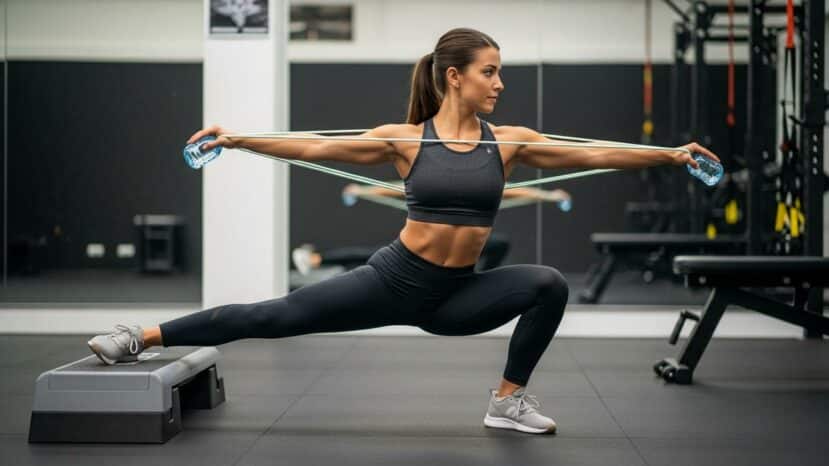Quadriceps: the 5 best exercises to gain strength and volume in 15 minutes

Want to run faster and climb stairs without straining your knees? Targeted quadriceps training makes all the difference, both at the office and on the track. This guide summarizes the movements and benchmarks validated by the field.
Understanding the muscles that propel and protect the knee
The quadriceps is a group of 4 muscles that extend the knee and stabilize the patella. These are the vastus lateralis, vastus medialis, intermedius and rectus femoris. In everyday life, they absorb shocks with every step. As a result, a good level of strength reduces the perceived load on the joint.
In addition to power, these muscles guide the trajectory of the patella. Inadequate control can sometimes aggravate anterior knee pain. Conversely, progressive strengthening supports the cartilage, especially during repeated efforts. Precise muscle timing also improves single-legbalance.
Flagship exercises validated in the field
Recent selections from the fitness media and coaches highlight the pillars: front squat, back squat, Bulgarian split squat, leg press and step-up. Each of these puts a heavy load on the quadriceps, but with different angles and levers. In the
“Quality of execution precedes load for durable quadriceps.”
The front squat encourages a more upright chest and marked knee flexion. The back squat, on the other hand, allows for a heavier load with a solid foundation. For added focus, heels raised
Progressions, volume and safe technique
Start with 3 to 4 sets of 6 to 10 repetitions on the main movement. Then place 1 to 2 isolation exercises in 12-15 repetitions, rest 60-120 sec. The load should be at
- Aligned knee: follows the ball of the foot, without falling inwards.
- Anchored heel: the thrust starts from the ground, then propagates towards the hip.
- Slow descent: 2 to 4 s of control for more tension.
- Tolerated amplitude: no sharp pain during the procedure.
- Keep the tension on the quadriceps all the way to the top.
The greater the amplitude, the greater the potential gain, as long as pain remains low. For example, heel raises or cyclist squats improve knee flexion and work sensation. The Spanish squat and wall isometrics are useful on fatigue days. In short, varying the angle keeps the knee happy.
The Decathlon – Step offers a stable platform for free-load step-ups. As a result, you can vary the height and facilitate quadriceps progression at home or in the gym.
Prevent pain and recover better
An 8-10 minute warm-up prepares tendons and cartilage. First, quick self-massage and activation with elastic bands. Next, isometric wall sit exercises lasting
Recovery requires a measured and regular volume. Aim for a post-session discomfort rating of
Typical plans for your level
Motivated beginner: 2 lower-body sessions per week, 48 h apart. Session A: goblet squat heel raises, split squat, wall sit. Session B: step-up, hip thrust, knee extension with mini-band. In this way, form rises quickly and the quadriceps are strengthened without overload.
For running and cycling, strengthen unilateral support for a stable stride. Controlled step-downs, Peterson step-ups and walking lunges consolidate balance. Also, place a short booster after intense outings. In short, keep your technique sharp when fatigue sets in.
In the home gym, a weighted backpack is all you need for slow squats and lunges. Add 1-2 s breaks at the bottom to meet the challenge. This way, even without a machine, the quadriceps progress thanks to time under tension. Consistency is more important than perfect equipment.





No comments
Post a comment
Always participate in accordance with the law and with respect for others.